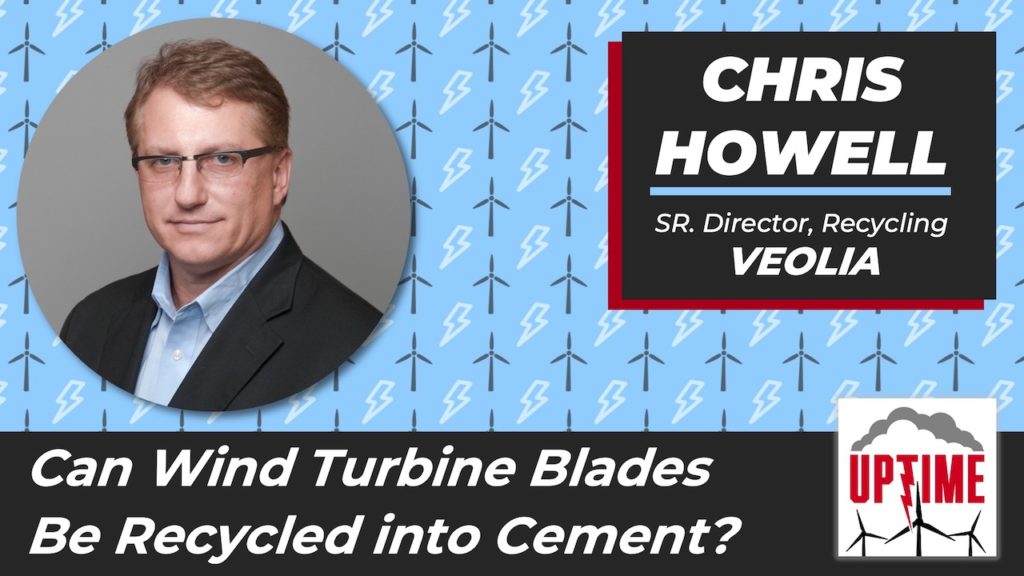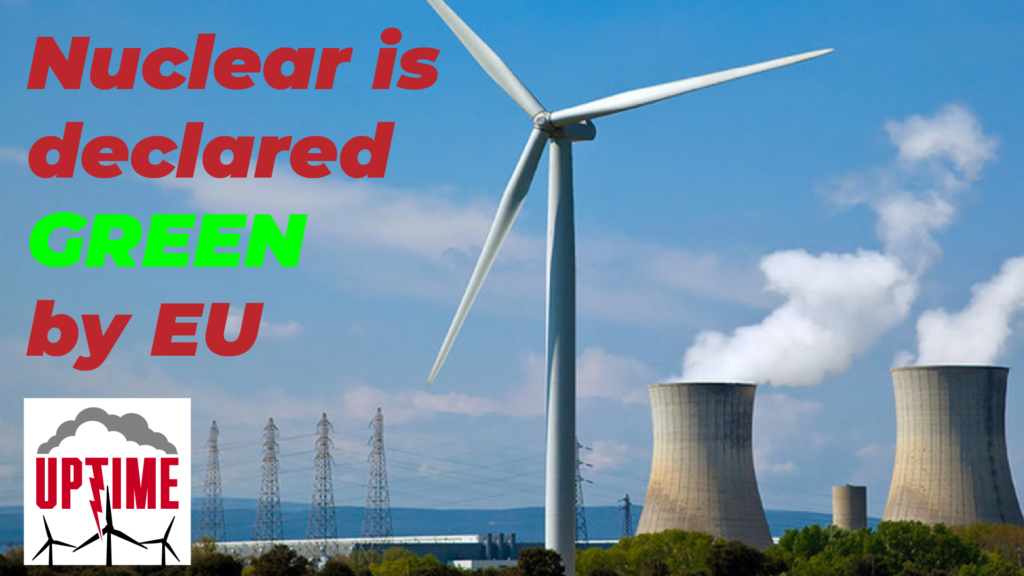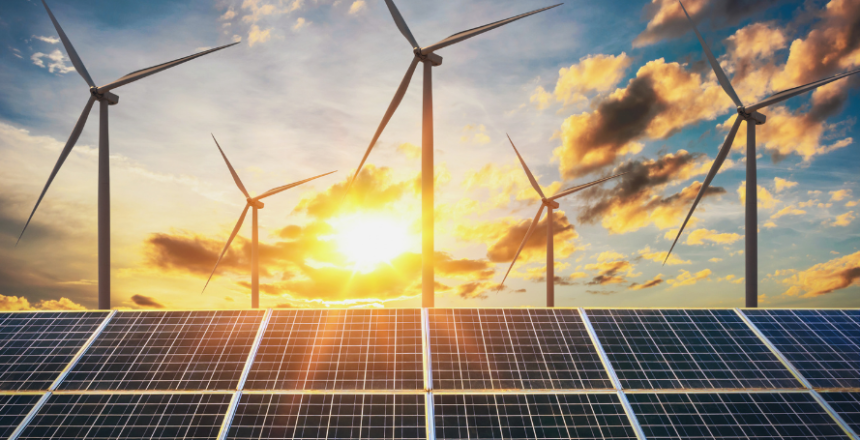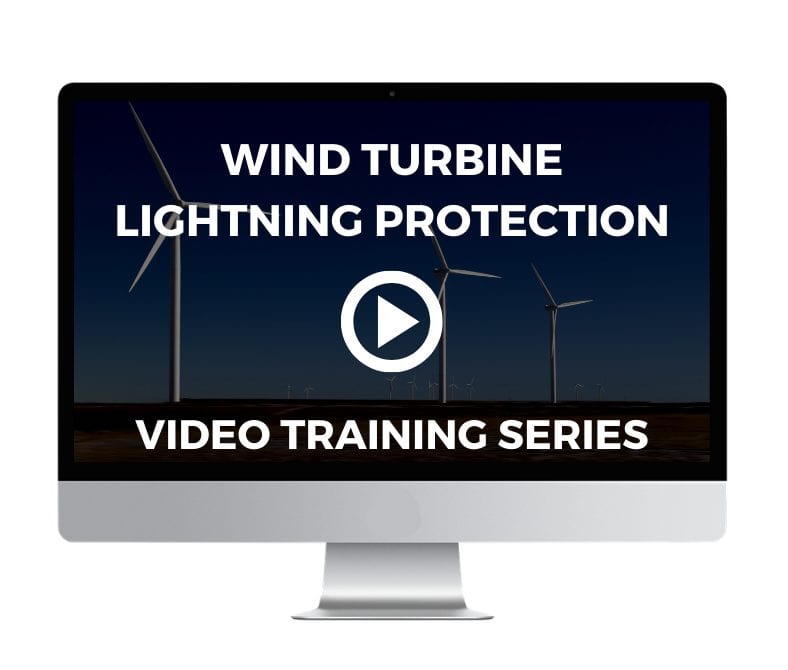While wind energy is clean and green, there’s no doubt it can be improved. COP26 focused world attention on some lofty green energy goals, but it will take time (and engineering, and a lot of money) to sort out the details.
We’ve worked for decades to improve wind turbine efficiency by helping owners and operators reduce blade damage due to lighting and other causes of leading edge erosion, which also extends the productive life of their blades. Because we work closely with many engineers, researchers and developers, we know there are hundreds of initiatives poised to make wind energy both more productive and more environmentally-friendly. In other words, a better form of green energy.
Here we share a little bit about some of those initiatives, and discuss how wind compares to other forms of green energy. To keep up with the latest developments, tune in to the weekly Uptime Wind Energy podcast for interviews and insightful analysis from industry experts.
More Cost-Effective, More Efficient Wind Energy is Greener Energy
Productivity is always important. Because the wind industry operates on lower margins than other green energy market segments, owners and operators constantly strive to increase blade efficiency and extend blade life – both of which also improve sustainability.
We have highlighted several simple wind turbine maintenance actions that have been shown to boost profits and reduce environmental impact.
For example, clean blades are not only more aerodynamic, they’re also easier to inspect – allowing techs to see and repair minor problems before they become major problems. Repairing small blade cracks is not only less expensive than making larger repairs, because less material is required to make those smaller repairs, they create less impact on the environment. And since well-maintained blades last longer, that’s another win for the environment – as well as for owners focused on expenses.
Making blade production better for the environment can also benefit the bottom line. Earlier this year we spoke with Greenboats, a boat manufacture using natural fiber materials to develop longer, lighter turbine blades for improved sustainability. Another environmental advantage: employees are exposed to fewer harmful materials in the manufacturing process and during wind turbine maintenance activities.
With many countries implementing disposal fees for industrial waste, more companies are using Life Cycle Cost Analysis (LCCA), often beginning in the product development phase. Some, like startup ACT, are employing a circular perspective from the design through the manufacturing and disposal process.
Green Energy and The Reality of Blade Recyclability

Increasing Wind Energy Productivity to Make it Even Greener
While we’re focused on reducing the damage that wind turbine blades sustain from lightning strikes, we’re eager to see all of the improvements being made to increase longevity and production levels, among wind, solar, and all forms of green energy.
Topping our list: more efficient wind turbine blades.
Also on the list:
- Longer-lasting blades.
- More sustainable materials and manufacturing methods.
- Better batteries and storage options.
- More efficient recycling options.
We’ve discussed these, and more, with industry experts on the Uptime podcast. Tune in any time, or get updates delivered to your in-box each week.
Want to discuss how to keep your blades working at fresh-from-the-factory levels? We’d love to talk to you.
How Does Wind Compare to Other Forms of Green Energy?
Compared with other energy sources, wind energy is about as green as it gets. But what does that mean? While renewable energy sources compete for public opinion and public (and private) investments, if we are serious about having a more sustainable energy future, we need improve all of the ways we produce and distribute power.
Asking which form of energy is the “best” focuses on the wrong question, as the answer depends on location, available resources, and other factors. Every energy source has unique pros and cons.
By most calculations, wind is more efficient at producing energy than solar. On the other hand, solar panels can be more cost-efficient (per kWh) than wind. Solar proponents will also point out that solar energy is silent, while wind continues to run afoul of noise requirements in populated areas. (Although a new look at the structure of seagull wings may quiet wind turbine blades.)
Both solar and wind – and other forms of green energy – are only as reliable as their battery, storage and distribution systems allow them to be.
Consider the recently opened Arevon Townsite Solar and Storage facility that will power about 60,000 homes near Las Vegas. Some say solar’s large land footprint makes it a less green energy solution. (The Arevon site sits on approximately 1,050 acres.) Of course, there are other environmental factors to consider, including the impact of mining raw ingredients like lithium and or manganese for the battery. And there are infrastructure issues: Arevon includes a 230kV substation, which is tied to the nearby Mead substation.
One of the reasons the wind energy development process moves slowly is because thorough environmental analyses are required at every step. Public oversight and multiple (well-funded) environmental groups work hard to minimize every point of impact.
So how green is hydrogen power? Right now, it’s incredibly expensive to build electrolyzers (which are necessary to produce hydrogen). In addition to high construction costs, the amount of electrical power needed in the process is also costly. And then there’s a transportation issue – costly in dollars and as well as in environmental damage. Hydrogen gas leaks could exacerbate the greenhouse gas problem. Bottom line: Hydrogen does not appear ready for prime time.
Still, some big investors are betting that storage and distribution technology will catch up with the need for cleaner, greener power soon. Siemens Energy expects to scale up electrolyzer production in Berlin by 2023.
And then there’s Nuclear.
When we talk about green energy, Nuclear lurks on the edge of the conversation like a stranger nobody wants to invite to the party. But Nuclear energy is no stranger to the world’s energy mix. It boasts tremendous capacity, reliable production, and relatively small land requirement.

After working to reduce lightning damage to turbine blades for more than 20 years, we’re wind experts – but we frequently discuss other forms of renewable and green energy with experts in their respective fields on the Uptime podcast.
What we know for sure is that wind is green, productive, and getting greener and more cost-effective every day. We see owners and manufacturers focusing on sustainability in 2022 by extending the productive lifecycle of wind turbines through monitoring and preventative maintenance. Want to know more? Please contact us.
Compared to solar, wind is more efficient at producing energy. One reason is that solar typically requires a larger land area to produce power. On the other hand, wind can contribute to noise pollution and some wildlife groups say wind farms can upset bird migration patterns and harm some bird populations.
Nuclear energy proponents point out it is a reliable energy source that has a small land footprint compared to solar and wind, for example. A unique and complex set of factors determines how much impact any type of energy has on the environment, both locally and globally – and that includes those traditionally considered green energy, such as solar and wind.
In 2022, it’s still very expensive to build electrolyzers because of high construction costs and because the vast amount of electrical power needed in the process. There are also concerns about hydrogen gas leaks, particularly during transportation, which could exacerbate the greenhouse gas problem. Bottom line: Hydrogen does not appear ready for prime time.
Uptime podcast named one of Feedspot’s Top 25 Renewable Energy Podcasts! Listen in here.






